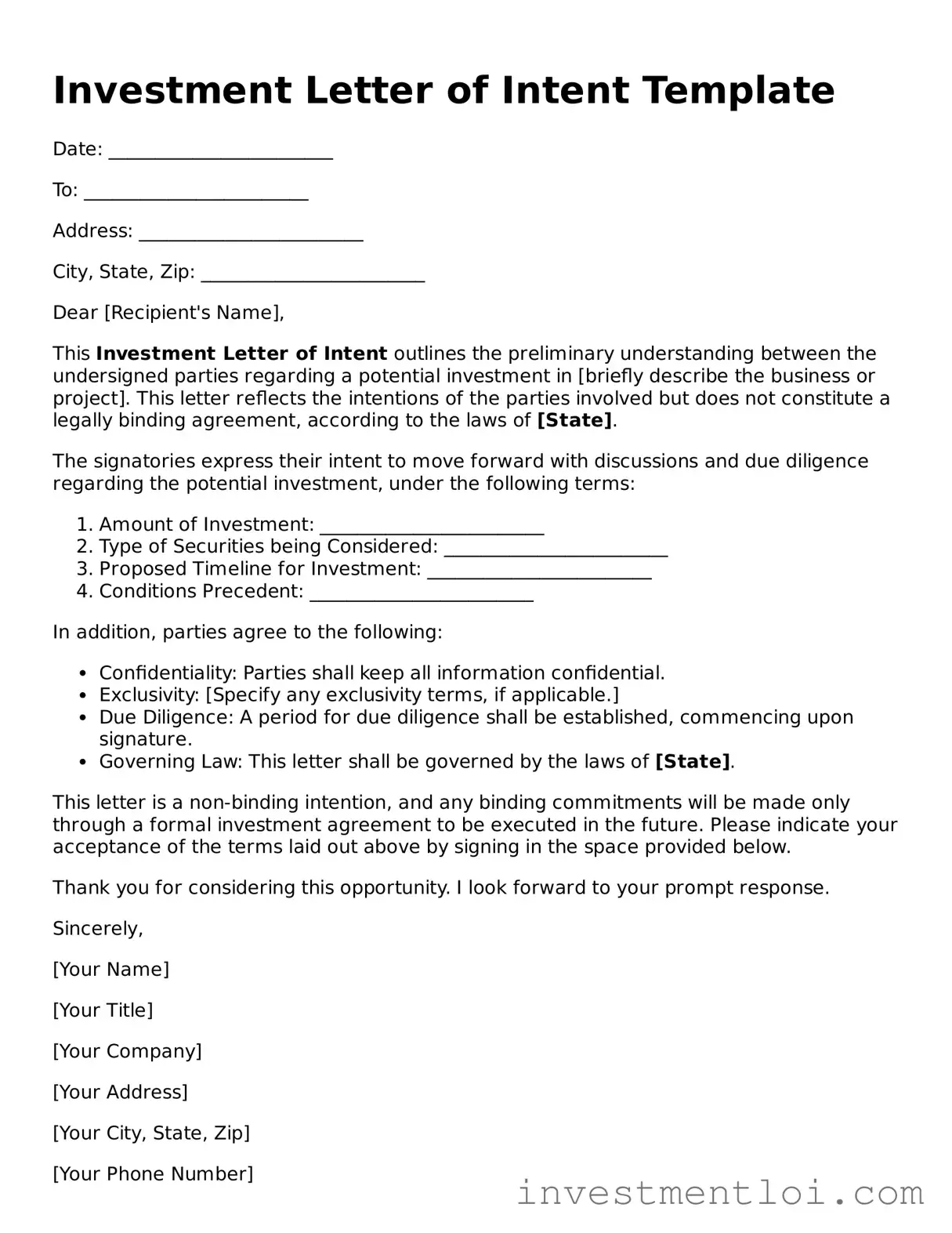Investment Letter of Intent Template
Date: ________________________
To: ________________________
Address: ________________________
City, State, Zip: ________________________
Dear [Recipient's Name],
This Investment Letter of Intent outlines the preliminary understanding between the undersigned parties regarding a potential investment in [briefly describe the business or project]. This letter reflects the intentions of the parties involved but does not constitute a legally binding agreement, according to the laws of [State].
The signatories express their intent to move forward with discussions and due diligence regarding the potential investment, under the following terms:
- Amount of Investment: ________________________
- Type of Securities being Considered: ________________________
- Proposed Timeline for Investment: ________________________
- Conditions Precedent: ________________________
In addition, parties agree to the following:
- Confidentiality: Parties shall keep all information confidential.
- Exclusivity: [Specify any exclusivity terms, if applicable.]
- Due Diligence: A period for due diligence shall be established, commencing upon signature.
- Governing Law: This letter shall be governed by the laws of [State].
This letter is a non-binding intention, and any binding commitments will be made only through a formal investment agreement to be executed in the future. Please indicate your acceptance of the terms laid out above by signing in the space provided below.
Thank you for considering this opportunity. I look forward to your prompt response.
Sincerely,
[Your Name]
[Your Title]
[Your Company]
[Your Address]
[Your City, State, Zip]
[Your Phone Number]
[Your Email Address]
Accepted and Agreed:
________________________ [Recipient Name]
________________________ [Title]
________________________ [Date]
